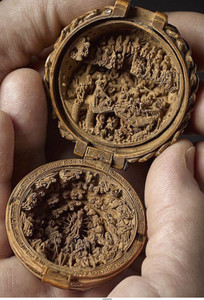Art has long played a pivotal role in preserving and celebrating culture. From the hallowed halls of museums to the vibrant streets adorned with murals, art acts as a powerful medium for cultural preservation. It not only showcases the diverse heritage of a society but also breathes life into traditions, stories, and values that might otherwise fade away. In this blog, we will explore the significant role that art plays in preserving culture, both in the controlled environments of museums and in the dynamic realm of street murals.
Museums as Cultural Treasuries: Museums serve as custodians of cultural artifacts, preserving and displaying them for future generations. Artworks, sculptures, historical artifacts, and traditional crafts find a home in museums, creating a tangible connection to the past. These institutions offer a controlled environment where delicate pieces can be conserved, researched, and exhibited to educate and inspire visitors. Museums not only preserve culture but also provide opportunities for individuals to engage with their heritage and gain a deeper understanding of their roots.
Preserving Traditional Techniques and Crafts: Art forms that have been passed down through generations face the risk of fading away in the face of modernization. Museums play a crucial role in documenting and preserving traditional techniques and crafts. By showcasing these crafts and providing a platform for artisans, museums help keep these cultural practices alive. Visitors can witness the mastery of traditional techniques and gain insight into the skill and creativity required to produce these works of art.
Art as a Storyteller: Art has the power to transcend time and space, telling stories that encapsulate cultural narratives. Through paintings, sculptures, and installations, artists can capture the essence of a culture, its history, struggles, and triumphs. Museums curate exhibitions that present these narratives, offering visitors a glimpse into the collective memory of a community or a nation. Art acts as a visual language, allowing cultural stories to be shared, understood, and appreciated by diverse audiences.
Street Murals: Art in the Public Realm: Street murals have emerged as a powerful form of cultural preservation in recent years. Artists, inspired by the communities they work in, use public spaces as canvases to create large-scale artworks that reflect the local culture, history, and social issues. These murals transform ordinary streets into open-air galleries, making art accessible to everyone. They serve as reminders of cultural identity, fostering a sense of pride and belonging within communities.
Art as Cultural Activism: Art has often been used as a tool for social and political activism. In the realm of cultural preservation, artists leverage their creativity to highlight the importance of preserving traditions, languages, and customs. Through their artwork, they raise awareness about endangered cultural practices and the need for their protection. Street murals, in particular, become powerful statements that not only beautify urban landscapes but also spark conversations and encourage community engagement.
Conclusion: Art, whether housed in museums or displayed on the streets, plays a significant role in cultural preservation. It preserves traditions, crafts, and narratives, providing a tangible link to our past and fostering a sense of cultural identity. Museums act as treasuries, safeguarding artifacts and showcasing them for public appreciation. Street murals, on the other hand, bring art to the masses, transforming public spaces into galleries and fostering community pride. Together, these forms of art weave a rich tapestry that celebrates and safeguards the diversity of our cultural heritage























Comments